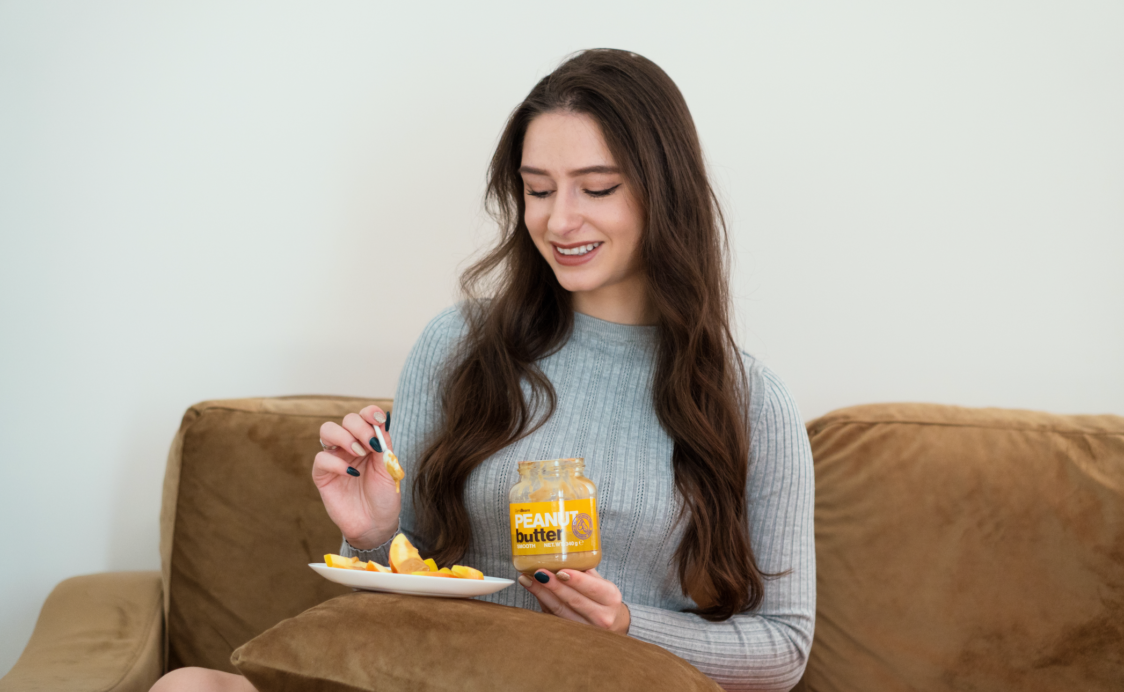Table of Contents
The fast-paced modern lifestyle takes its toll on various aspects of our lives, and our diet is no exception. When it comes to food, we often opt for quick solutions in the form of highly processed foods. While they may offer convenience and ease, the fact remains that they are associated with a range of civilization-related problems and diseases, including weight gain and obesity. In today’s article, let’s have a look at how to reduce highly processed foods in our lives and avoid the various issues associated with their nutritional profile.
What are highly processed foods?
Before diving into the specific tips, it’s important to understand what is meant by highly processed foods. You may be surprised to learn that many of these products do regularly appear in your shopping cart as well. Highly processed foods are products that have undergone various technological processes which enriched them with various additives that make them significantly different from the original raw ingredients and unprocessed foods.
The goal of these processes is usually to extend shelf life or enhance taste, but they often come at the expense of adding various food additives and substances. In the composition of these foods, you will often find higher amounts of added sugars (such as glucose-fructose syrup), salt, trans fats, preservatives, sweeteners, flavours, lower quality meat parts, and other ingredients. Examples of extra-highly processed foods include chocolate, ice cream, sugary drinks, sweet pastries, chips, processed meats, sausages, chicken nuggets, frozen French fries, canned soups, hot dogs, and more.

In highly processed foods, you will typically find refined carbohydrates, flavour enhancers, high levels of fat, salt, or sugar. Moreover, they are characterized by having a large amount of energy in a small quantity of food (high energy density) and low nutritional value. Additionally, due to their low fibre and protein content, highly processed foods have a low satiating capacity, meaning that you can easily consume a large quantity of them without feeling satisfied.
What makes it worse is that you intake a significant amount of calories from them, which can negatively impact your weight. Diet based on these foods may eventually lead to some problems. Consuming highly processed foods has been associated with a higher risk of cardiovascular diseases, weight gain, diabetes, obesity, and more, according to various studies. [1 – 3]
You might be interested in these products:
7 Tips on How to Limit Highly Processed Foods in Your Diet
If you want to reduce the mentioned risks, eat healthier, take control of your food, and be more mindful of your weight. Highly processed foods should not be a frequent part of your diet. But don’t worry, here are some tips on how to avoid or at least limit them.
1. Think while shopping
When it comes to limiting highly processed foods, it’s best to start during your shopping. Try to break your routine of purchasing croissants, doughnuts, or other sweet pastries. The same goes for chips, processed meats, sausages, smoked meats, and other highly processed foods that may tempt you with their larger, more cost-effective XXL packaging. You can buy smaller portions from this category as an occasional treat, but aim to build your grocery list in a way that does not rely heavily on these foods. Remember, if you don’t put in your shopping basket, you won’t have it home. If you don’t have it at home, you can’t eat it. [4]
If you’re interested in this topic, be sure not to miss our 7 Tips on How to Choose and Shop for Groceries the Right Way.
2. Consume more fresh foods
Try to incorporate more unprocessed foods into your diet, which have lower calorie content and higher levels of vitamins, fibre, and other beneficial nutrients. Fruits and vegetables are excellent examples. They can be incorporated into practically any meal, providing valuable nutrients. When making an omelet, for instance, add spinach instead of bacon or salami. You can also make better choices for sweet breakfasts by swapping sugary cereals for a mixture of oats, nuts, and seeds, or trying oatmeal with fresh fruit sweetened with chicory syrup. These fresh foods not only increase portion size and take up more space on your plate, but they also don’t add a significant amount of extra calories and can effectively replace less suitable ingredients. If you don’t have fresh fruits or vegetables on hand, suitable alternatives can be frozen vegetables or freeze-dried fruit. However, keep in mind that they are more concentrated sources of energy, so moderation is key.
You can apply the same approach to meat. Highly processed versions of meat are prepared through canning, smoking, salting, drying, and the addition of other substances. Examples of these foods include ham, salami, hot dogs, sausages, and bacon. Therefore, try to limit these processed meats and opt for fresh and unprocessed meats that you can cook from at home. It’s important to note that frozen meat or meat that has undergone mechanical processing, such as slicing, is also considered unprocessed. [5 – 6]

3. At least partially replace refined carbohydrates
Refined carbohydrates refer to highly processed carbohydrate-rich foods that have been stripped of fibre, vitamins, minerals, and other beneficial nutrients during processing. They become quick sources of energy that do not provide long-lasting satiety. In practice, these include bread, rolls, and other pastries made from white flour, as well as delicate pastries like croissants. Some examples of products made from white flour include certain types of pasta, cookies, and biscuits. [7]
You can certainly indulge in these foods occasionally, but it’s important to consume refined carbohydrates in moderation. The majority of your diet should consist of unrefined carbohydrates (found in whole grain products), which typically have higher fibre content beneficial for healthy digestion. Furthermore, unrefined carbohydrates contain vitamins, minerals, and other valuable nutrients, and they provide longer-lasting satiety. For instance, if you love bread and pasta, try replacing the plain versions with whole grain alternatives. Other examples of unrefined carbohydrates include fruits, vegetables, oats/rye flakes, potatoes, and legumes such as beans, chickpeas, and soybeans. [5]
If you’re interested in the topic of carbohydrates, you can read more about them in our article Carbohydrates: Classification, Sources, Digestion, Functions in the Body, and Optimal Intake.
4. Keep healthy snacks on hand
During busy days, it’s great to have snacks on hand to curb hunger. However, if your pantry is filled with nutritionally poor snacks like chips, crackers, candy bars, chocolates, cookies, biscuits and other sweets, it can be challenging to choose a healthier path. Therefore, it’s important to think ahead while filling your shopping basket. Instead of regular sweets, try opting for various alternatives. You can find inspiration from our selection of snacks.
These are foods that contain higher amounts of protein and fibre, as well as less sugar and fat. In terms of satiety, they are much more effective. Popular healthy snacks include protein bars, natural nuts and seeds, nut butters, or unsweetened dairy products. To satisfy your cravings for something sweet, you can enjoy white yogurt with fresh fruit and a handful of nuts or seeds. However, you can also prepare quick homemade snacks.
In case you don’t have time to prepare snacks, the article How to Choose a Quality Protein Bar will definitely come in handy. It will help you navigate the market and choose the best solution.
For example, you can pack a container of hummus with chopped vegetables before leaving home. You can also try crispy seed crackers, coconut or no-bake peanut butter cookies. Having one of these on hand should prevent you from running into a bakery and impulsively grabbing doughnuts, which you might wash down with an ice cream-filled frappuccino loaded with even more sugar.

5. Drink less fizzy drinks and more water
Let’s continue with the topic of liquid sugars. All sugar-sweetened fizzy drinks and beverages are a staple in the category of highly processed foods. Whether it’s the beloved cola, lemonade, or energy drinks, they all have one thing in common – calories in the form of simple sugar. Most people consume these calories unknowingly, even though they are associated with a higher risk of overweight or obesity. For instance, one litre of cola contains approximately 450 calories, which can be equivalent to a full meal. If you consume a two-litre bottle in a day, you’re already reaching almost half of the daily calorie intake for someone whose daily diet amounts to 2000 calories. And this doesn’t even include the food you eat throughout the day. [8 – 9]
Therefore, try to limit these sugary beverages. Of course, if you’re used to drinking several litres of soda daily, you’ll need to approach this gradually. Instead of the regular sweetened version, you can prepare homemade lemonade sweetened with stevia, erythritol or xylitol, for example. Another interesting option can be flavoured mineral waters that don’t contain sugar. However, initially, it may be enough to dilute your favourite juice or cola with water.
Flavoured BCAA powders, are also often a popular solution as they can enhance the taste of water while providing beneficial amino acids. By gradually reducing sugar-sweetened drinks, you may reach a point where a simple lemon, lime and plain water will be enough. A pleasant bonus can be that by eliminating sugary beverages, you’ll reduce your daily calorie intake, which will have a positive effect on your body.
If you’re interested in learning more about liquid calories, you can read our article Where Are Liquid Calories Hiding and How These Empty Calories Prevent You From Losing Weight?

6. Eat more homemade meals and less fast food
Under the weight of obligations, we often neglect meal preparation. Hunger then drives us to order pizza or other fast food, which brings us short-term satisfaction. In the end, such a diet is rich in highly processed foods and carries the risks mentioned earlier. One solution may be to prepare honest homemade meals using nutritious ingredients.
By preparing meals yourself, you have full control over the ingredients and can easily avoid highly processed foods. Try to cook with fresh/basic ingredients and use unrefined carbohydrates. If you have little time for cooking, plan ahead and do meal preps.
When preparing homemade meals, make sure they include all the essential macronutrients: proteins, carbohydrates, and fats. You can prepare several variations that can be easily combined. For example, a great option is stir-fried meat or tofu with vegetables, which serve as a source of both protein and fat. Add complex carbohydrates like couscous or bulgur and you’re sorted. You can also store prepared meals in the freezer, as they last longer and can be easily reheated. This way, you can enjoy healthier and minimally processed dishes without having to cook every day. Our Sample Meal Plan and Meal Prep Guide can provide inspiration.
However, if you find yourself in a fast-food restaurant just every now and then, there’s no need to feel guilty. You can still make a good compromise by choosing healthier options whilst you’re there. Try to avoid heavily fried calorie bombs and opt for grilled options instead. A good example is a wrap that usually contains grilled chicken, vegetables, and a small amount of sauce as a source of fat. When possible, consider choosing a yogurt-based dressing or sauce. You can conclude a healthier choice by replacing sugary beverages with water. Additionally, almost every fast-food chain provides nutrition information on their website, which can help you make a better choice. [10]

7. Don’t strive for perfection and use the 80/20 Rule
Despite the effective strategies mentioned above, don’t strive for perfection when it comes to limiting highly processed foods. Excessive restriction could lead to issues such as eating disorders. Indulging in any food just occasionally won’t harm you, and the 80/20 Rule can be useful in this regard. It suggests that 80% of your energy intake should come from nutritious foods, while the remaining 20% can be filled with foods like pizza, chocolate, or other favourite treats.
At the same time, don’t try to change everything at once, especially if highly processed foods have been a regular part of your diet for years. It’s better to take small steps that are more sustainable than making drastic changes that won’t last and may lead to disappointment. In the beginning, you don’t have to change your entire daily routine; simply start by making your breakfast or each of your daily meals healthier by adding fruits and vegetables. Later on, you can focus on improving your hydration with clean water and gradually adjust other meals such as lunch or dinner. [11]
Conclusion
Highly processed foods and meals are lurking everywhere you go. While it’s easy to succumb to them in the today’s fast-paced lifestyle, they come with various risks that can impact your long-term health. Therefore, we hope you can appreciate some of our tips that will help you limit or replace these foods and improve your overall eating habits. However, as always, it’s important not to strive for perfection and introduce changes gradually. Whether it’s the 80/20 Rule, reducing sugary beverages or refined carbohydrates, it’s through small steps that you’ll be able to maintain new habits in the long run. And that’s what matters, isn’t it?
[1] Olivia Cassano - How to identify ultra-processed food and what to eat instead – https://joinzoe.com/learn/what-is-ultra-processed-food
[2] What is ultra-processed food and how can you eat less of it? – https://www.heartandstroke.ca/articles/what-is-ultra-processed-food
[3] Leonie Elizabeth, Priscila Machado, Marit Zinöcker, Phillip Baker, Mark Lawrence - Ultra-Processed Foods and Health Outcomes: A Narrative Review – https://www.ncbi.nlm.nih.gov/pmc/articles/PMC7399967/
[4] Five ways to eat less processed food – https://www.heartfoundation.org.nz/about-us/news/blogs/five-ways-to-eat-less-processed-food
[5] Linnea Harris - 9 Realistic Ways to Eat Fewer Processed Foods – https://www.ecowatch.com/how-to-eat-less-processed-food-2654777612.html
[6] Atli Arnarson - Why Processed Meat is Bad For You – https://www.healthline.com/nutrition/why-processed-meat-is-bad?utm_source=ReadNext
[7] Jillian Kubala - Carbohydrates: Whole vs. Refined — Here’s the Difference – https://www.healthline.com/nutrition/good-carbs-bad-carbs
[8] Vasanti S Malik, Matthias B Schulze, Frank B Hu - Intake of sugar-sweetened beverages and weight gain: a systematic review – https://www.ncbi.nlm.nih.gov/pmc/articles/PMC3210834/
[9] Bray George, Nielsen Samara Joy, Popkin Barry - Consumption of high-fructose corn syrup in beverages may play a role in the epidemic of obesity – https://linkinghub.elsevier.com/retrieve/pii/S0002916522038837
[10] 10 Easy Ways to Ditch Processed Food for Good – https://dontmesswithmama.com/10-easy-steps-to-live-processed-free/
[11] April Schetler - THE 80/20 RULE—EAT HEALTHY AND HAVE YOUR CAKE, TOO! – https://www.virtua.org/articles/the-80-20-rule-eat-healthy-and-have-your-cake-too


Add a comment